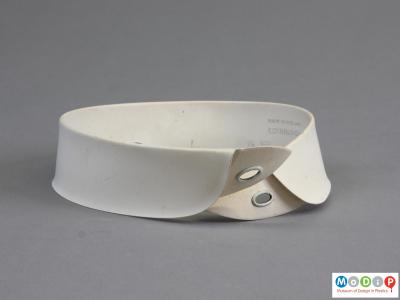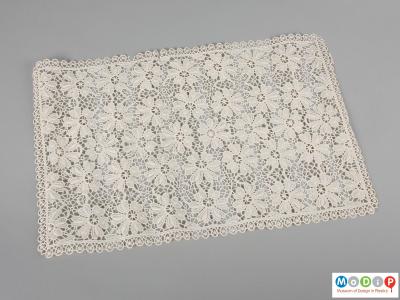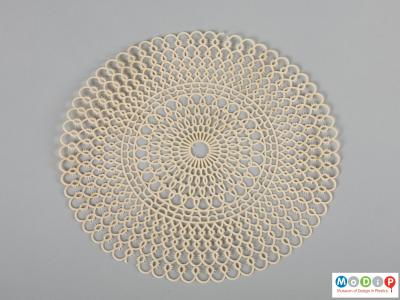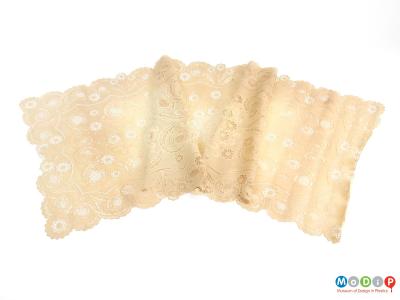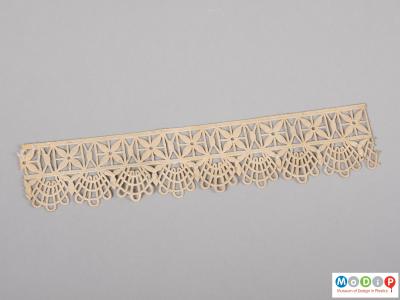Natural fibres are well known for their ability to accept and retain a crease, a characteristic which can be exploited to give shape and form to a garment. At other times, this can be detrimental to the appearance of a finished item. The addition or substitution of a man made fibre such as polyester can improve the finish as it resists wrinkling and is resistant to stretching or shrinking. It is also easy to launder and its hydrophobic nature means that it dries quickly. The contemporary white blouse (1) is made from 100% polyester.
The Xylonite collar (2) is from an age when men's shirt collars were detachable and laundered separately. This plastic alternative, together with the popular dickeys or shirt fronts and cuffs, were waterproof and stain resistant and kept their sleek appearance and did not wrinkle or fray. Xylonite, the material from which this collar is made, is a trade name for cellulose nitrate, a lightweight and mass produced material which was commonly used for small accessories in the late 19th and early 20th century.
The waterproof and wipe clean nature of PVC and polyethylene meant that they were ideal materials for items such as tray cloths (3) and table mats (4), popular in the mid 20th century home. The calendered PVC (5) provides a thin, pliable material, which drapes like a natural fibre and which, when punched with a pattern, imitates delicate lace but it is much more easily cared for. The delicate Parkesine lace trim (6) has a realistic textured upper surface but the underside clearly shows the moulding process used in its production.
The table napkin (7) is woven and coloured to represent linen, the traditional fibre for table napery. The appearance of linen is not easy to maintain and in this case, polyester has been used to recreate the look of the item without the problems of care.


